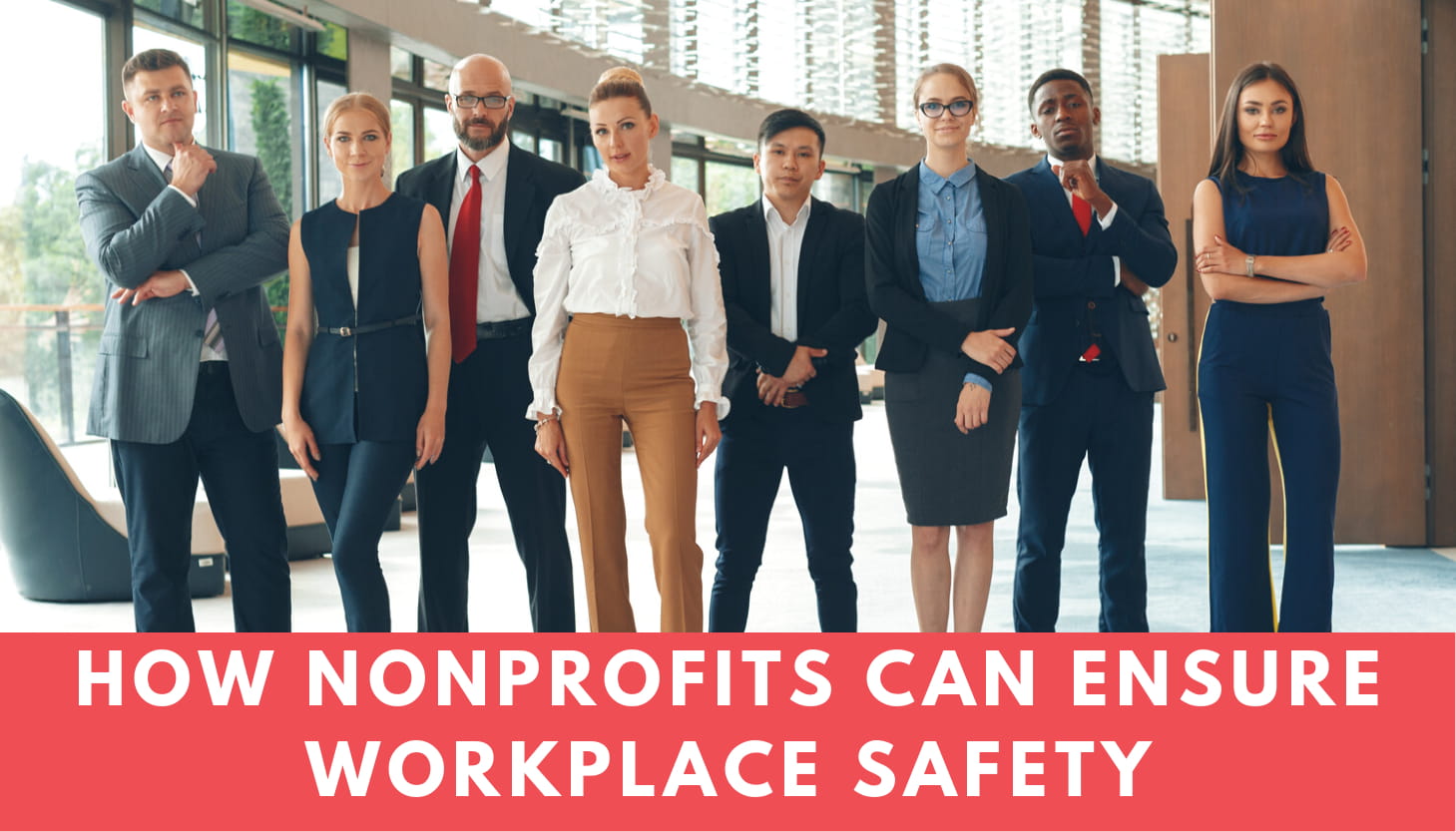How Nonprofits Can Ensure Workplace Safety
Does your nonprofit have a workplace safety policy? If not, you could be putting yourself - and your employees - at risk. Read on to learn how you can ensure workplace safety at your nonprofit.

Does your nonprofit have a workplace safety policy? If not, you could be putting yourself - and your employees - at risk. Read on to learn how you can ensure workplace safety at your nonprofit.

When it comes to workplace safety, the needs of nonprofits aren’t that dissimilar from those of any conventional business. That’s not to say, however, that the two should be handled in the same way. There are many ways in which nonprofits are unique in the scope of their workplace safety imperatives.
One of the reasons for that is that nonprofits tend to have a more complex employment structure than a typical for-profit business. They often have full-time staff, volunteers, program administrators, and sometimes many other classes of employees that must all be provided with a safe, healthy workplace environment. They also have safety needs that relate to their clients and other beneficiaries, as well.
Put together, that makes the workplace safety landscape for nonprofits one that’s fraught with challenges – but they’re challenges that can be overcome with some solid planning, policy-making, and training.
Here’s an overview of the best ways for nonprofits to tackle the situation.
Although it may seem like an obvious bit of advice, the first piece of the workplace safety puzzle for nonprofits is to conduct a risk assessment. Doing so will provide decision-makers with the information they need to make sure every aspect of workplace safety is addressed appropriately.
Since no two nonprofits will operate in the same ways, there’s no set playbook as to how to go about a risk assessment, but in general, they should be looking to:
In short, the risk assessment should try to create a hit list of environmental and other factors that may pose a risk to employees. That will make it possible to fix each issue before drafting a formal workplace safety policy. To be thorough, the best way to handle this task is to follow the guidelines for hazard identification set forth by OSHA (or the HSE for UK-based nonprofits).
After identifying the risks to workplace safety that affect your organization, the next step is to create a comprehensive workplace safety policy to mitigate those risks. It’s best to think of this as an umbrella document that outlines what responsibilities the organization has concerning workplace safety, as well as the specific responsibilities that everyone working for the organization must live up to.
The policy should state in no uncertain terms the penalties for noncompliance and the disciplinary procedure used to enforce it. Consider using this template as a guide to creating a policy that’s suitable for your nonprofit. When you have a document that seems to cover all the bases, get it reviewed by an attorney familiar with workplace safety law. This will make sure that there are no compliance or other legal issues before the policy goes into effect.
In addition to creating a workplace safety policy, most nonprofits require an off-site work safety policy to cover any special events or fundraisers that fall under their remit. Since these will typically take place in less controlled environments than the main office, the policy used will need updating with each new event.
In general, this is best approached with the same procedure used to create the main workplace safety policy. It should also include event-specific information and planning to suit the venue and type of function it applies to.
With your workplace safety policy in place, the next thing to do is to designate a workplace safety point person. Choose an employee (typically one with an HR background, if available) to handle all workplace safety issues going forward. That will help to make sure that the application of the policy is the same throughout the organization.
Once the point-person is selected, they should receive workplace safety training as appropriate. The format and length of the training provided should be in line with the complexity of the safety issues relevant to the nonprofit. For example, if, for some reason, employees may regularly come into contact with hazardous chemicals, specific training in managing those materials is a must.
Finding appropriate training is often complicated by a lack of standardization in the field. In the US, there’s no real certification process in place with regard to official OSHA guidelines, but there are some courses available that cover legal compliance issues and the basics of workplace safety. They’re a good place to start. In the UK, there are a wide variety of NEBOSH certifications that cover various aspects of occupational health and safety, all of which are just as valid and applicable as basic training for US-based nonprofits.
Be sure to devote some training time to explaining the workplace safety policy to everyone subject to it. It’s a critical step since one of the primary failings of many nonprofit workplace safety initiatives is that they’re poorly understood by rank-and-file employees. When that happens, they’re all but guaranteed not to be executed to their maximum effect.
For that reason, it’s essential to make sure that every employee in your organization receives specific training and a point-by-point explanation of the workplace safety policy and is required to sign off on a statement acknowledging their responsibilities. This procedure should also become a standard part of the employee onboarding process for all new employees, volunteers, or other organization members that come into the fold.
Although it’s tempting to think the job is done at this point, nothing could be further from the truth. Workplace safety is a topic that nonprofits must address on an ongoing basis to ensure enforcement of the policy, and to refine it as the organization’s needs change. There will always be reasons to revisit the issue.
Taking on a large group of new volunteers? Time to revisit the workplace safety. Moving into new office space because things are going so well? Look at workplace safety again. Every time your nonprofit undergoes any significant changes, workplace safety must be addressed again. The consequences of not doing so can be dire. Nobody wants to see their coworkers come to harm, and nonprofits can’t afford to devote extra resources to anything other than the causes they support.
For nonprofits, workplace safety must be a primary organizational goal. It’s in the best interests of your nonprofit itself, the people who work so hard in service of it, and the beneficiaries it supports. Plus, it’s a prime example of the old axiom, “An ounce of prevention is worth a pound of cure.”

Subscribe to our e-newsletter to receive the latest blogs, news, and more in your inbox.

